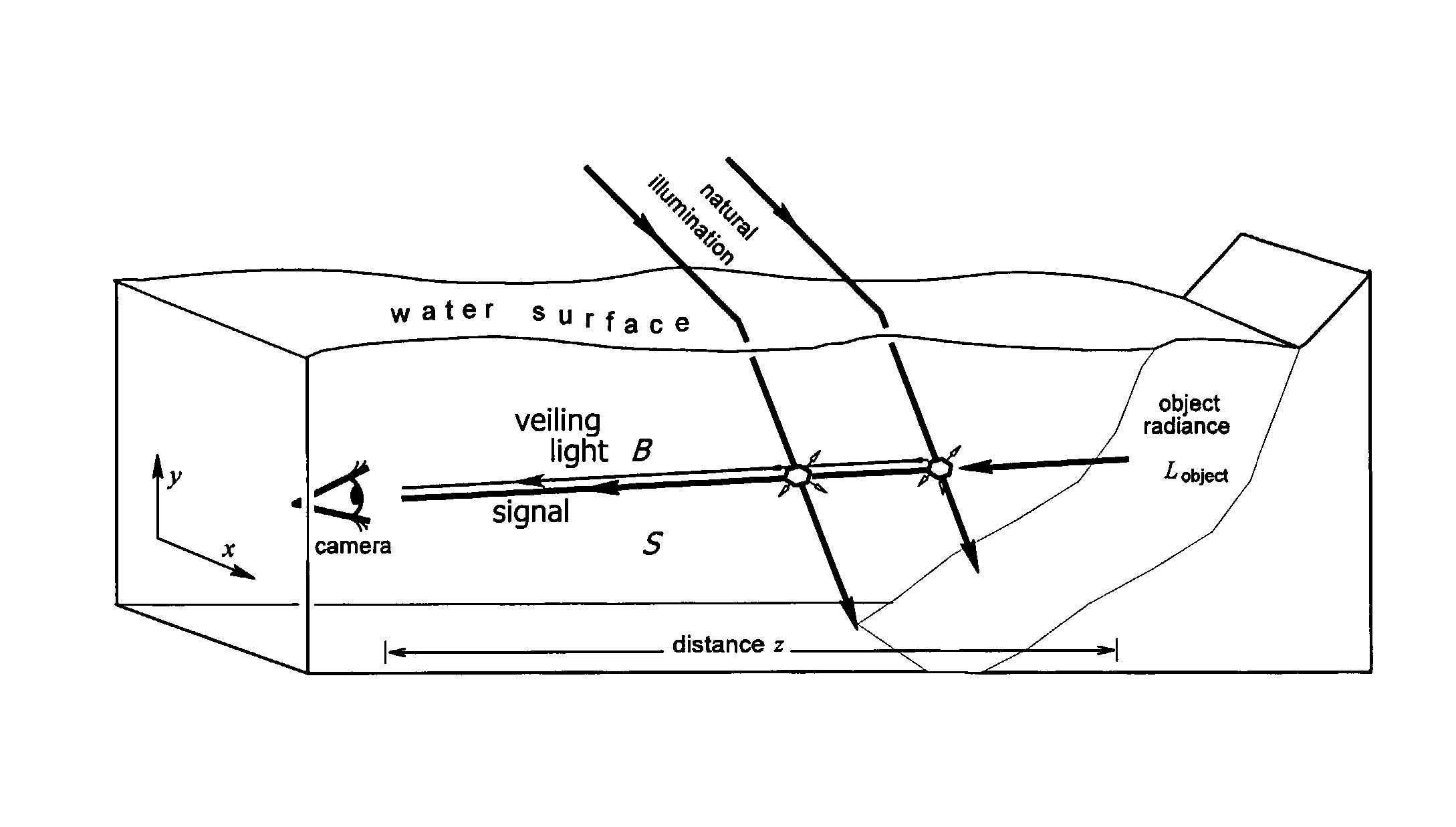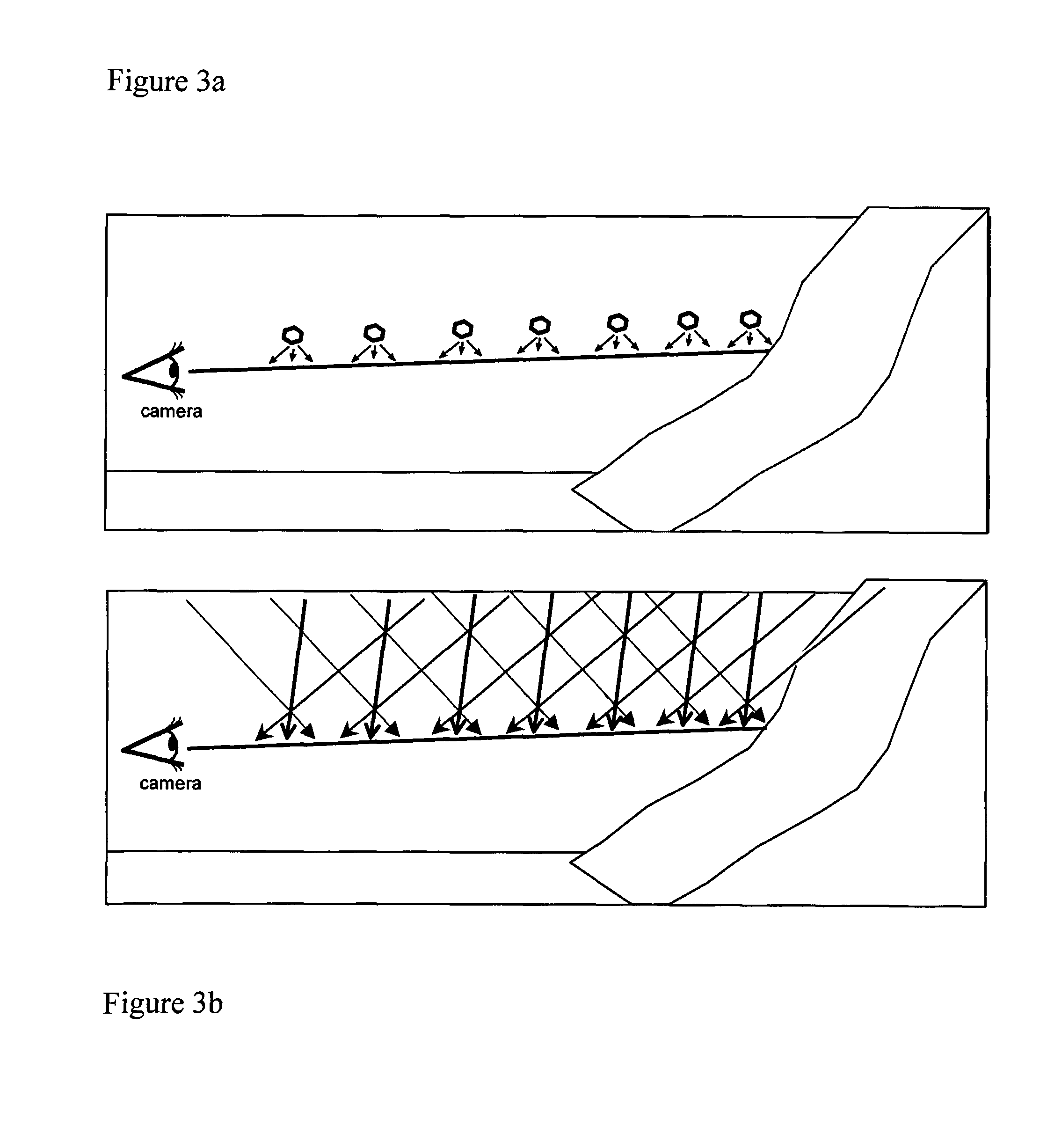Enhanced Underwater Imaging
- Summary
- Abstract
- Description
- Claims
- Application Information
AI Technical Summary
Benefits of technology
Problems solved by technology
Method used
Image
Examples
Embodiment Construction
[0040] In this work we develop a physics-based approach for recovery of visibility when imaging underwater scenes, preferably in natural illumination. Since it is based on the models of image formation, the approach automatically accounts for dependencies on object distance, and facilitates retrieving a distance map of the scene as a by-product. The method presented is fast to perform, and according to a preferred embodiment of the present invention relies on raw images taken through different states of a polarizing filter. These raw images have slight photometric differences with respect to one another. The differences serve as initial cues for our algorithm factoring out turbidity effects. It is interesting to note that marine animals too use polarization for improved vision.
[0041] To demonstrate the approach, we have built an underwater polarization imaging system composed of both custom and off-the-shelf components (the considerations for selecting the components are described ...
PUM
 Login to View More
Login to View More Abstract
Description
Claims
Application Information
 Login to View More
Login to View More - R&D
- Intellectual Property
- Life Sciences
- Materials
- Tech Scout
- Unparalleled Data Quality
- Higher Quality Content
- 60% Fewer Hallucinations
Browse by: Latest US Patents, China's latest patents, Technical Efficacy Thesaurus, Application Domain, Technology Topic, Popular Technical Reports.
© 2025 PatSnap. All rights reserved.Legal|Privacy policy|Modern Slavery Act Transparency Statement|Sitemap|About US| Contact US: help@patsnap.com



